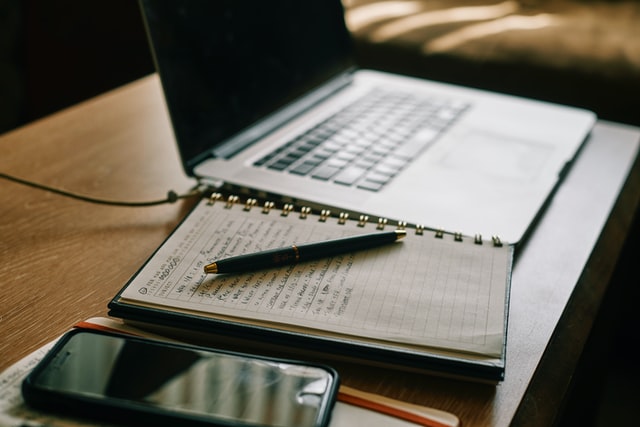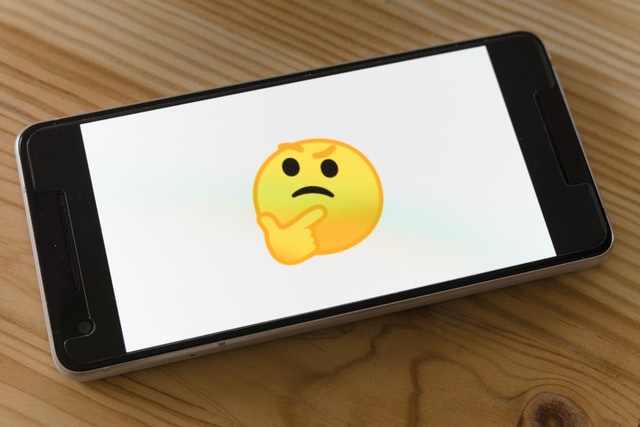By Riffat Yusuf
Here’s another question to keep you awake at night: what’s with the erratic commas in Riffat’s emails? So as not to discriminate between coordinating and subordinating conjunctions? More likely because she’s upstairs, New Hart’s Rules is downstairs and this pre-dawn missive isn’t work-related.
Here’s an easier one: is it incontrovertibly acceptable for professional editors not to pedantise their off-the-clock correspondence? Yes, say 87.5% of the CIEP members I polled, with a dissident John Espirian saying no, yes.*
 Until the CIEP ratifies the unwritten rule about not having to ensure consistency when writing in an informal style, for instance, in emails, text messages and on social media, I shall quote Kathleen Lyle if ever my clarity and commas are queried: ‘my writing practices are shaped partly by the technology I’m using, and partly by my social situation’.
Until the CIEP ratifies the unwritten rule about not having to ensure consistency when writing in an informal style, for instance, in emails, text messages and on social media, I shall quote Kathleen Lyle if ever my clarity and commas are queried: ‘my writing practices are shaped partly by the technology I’m using, and partly by my social situation’.
Writing in an Informal Style: Dash it!
Em and en dashes are more easily ceded than any other punctuation mark by the off-duty editors I surveyed. Nick Taylor, who plucks out the commas between cumulative adjectives in a shopping list and wrote a blog post to help me weed them out, elides dates with a hyphen in informal contexts. He says it’s ‘simply too much of a hassle for something that isn’t particularly noticed’. Nevertheless, strimming a dash chafes his editing conscience: ‘I know, deep down, that I’m wrong. I wonder if the recipient will feel like I’ve cheated them out of a “proper” dash. Worse, what if they judge me – an editor – for it?’
I share Nick’s misgivings and wish I shared the same shortcut in informal writing because, unlike my impulsive commas, his unconventional dashes are sanctioned by Kathleen Lyle and royalty. Kathleen isn’t fussed about using hyphens instead of dashes and she knows why: ‘Conventions about dashes were intended to regularise text that is being prepared for publication, not for private or semi-private correspondence.’ Kathleen doesn’t expect people to measure the width of en or em rules in handwritten letters (nor, she suspects, did Queen Victoria, whose dashes were disparate) so why would they be scrutinised in an email?
Technology gives Kathleen yet another reason to skip convention. Her email and browser software doesn’t play ball with the keyboard shortcuts she’s set up in Word. Unlike Kathleen, I can’t say that technology lets me down – after all, a comma doesn’t require a shortcut. If Kathleen inserts or leaves out commas in her emails, she is electing to do so; when I do it, it’s with the accuracy of a flipped coin.
I share one trait with Kathleen, though; we are both one-finger prodders. (In Kathleen’s case this applies only to phone and tablet touchscreens, and not soft fruit and bread rolls.) The downside to not having long, flexible, ballerina thumbs is that punctuating anything on my phone exacts the forbearance of a Bletchley Park coder. You would think that spyware would be evolved enough to key huffing and effing as ‘backspace and stick a comma where it should be’.
Smiley culture as an example of writing in an informal style
There’s more than one way to style a chat. Or, as Ayesha Chari says, to ‘mould communication to fit the context in ways that we’re not always aware of’. Although Ayesha cares more about punctuation than other writing conventions such as ‘dangling whatevers’, she uses emojis in her informal text messages. Emojis instead of punctuation, that is.
Ayesha’s picture punctuation is, she tells me, ‘partly to fit protocol’; she sometimes types then deletes a standard mark and inserts an emoji instead. I could ask her whether, as Gretchen McCulloch suggests in Because Internet, she styles to convey gesture rather than structure the sentence, but ¯\_(ツ)_/¯.
FYI friends, if you write to me, any emoji (even a misappropriated vegetable) is more instructive and more welcome than a lopsided emoticon. I crane my neck to read your semicolon winks and cannot decipher terminal punctuation – a grin is easily a double chin :)) or whatever person with a cold sore this is :). And, BTW, I’ve used up half of the abbreviations in my social media repository, so your multi-letter AF shortcut is my CBA to google.
What makes me smile(y!) about Ayesha’s styling is that it belies an ingrained editorial process. Not only does she, for example, replace a question mark with ‘Face with Monocle’ 🧐, she also uses emojis to edit other emojis. So when she mistakenly uses a 😄 for a 😊 (exclamation mark and full stop respectively) she will correct it with one of these: 😌.
 Grok star
Grok star
I think it’s a sign that you’ve truly arrived as an editor when you can let down your guard in informal correspondence as Lucy Ridout does: ‘Some days it’s all about acknowledgement of mid points being OK at 11 a.m.; on other days it’s more random.’ Whimsical by default, and not by actual fault, is how I would like fellow editors to intuit my inconsistencies. In breezier correspondence, when I’m not evoking Kathleen Lyle, I should imitate Lucy’s modelling: ‘The rule I break most flagrantly in my own writing is consistency … I don’t adhere to a personal style sheet in all things.’
I doubt, though, that I can carry off unpredictable shortcuts with Lucy’s flair, especially in exchanges with an editor whose attention to detail is unerringly consistent even in his most off-the-cuff emails. Robin Black’s compound modifiers are always on point and his e.g. is never without two of them. But even Robin breaks the rules, diving into ‘the fantastically deep pool of English words’ and coming up with, wait for it, a sentence containing etc. etc. Yikes!
Robin’s double et cetera, while not nearly as gauche as a single etc. (minus the point) ending a list introduced by ‘such as’, is nevertheless an infraction by his standards. Spoken English regularly employs a double et cetera in shared contexts, he explains, ‘to extend meaning without going into the details’ (imagine a client describing a project: ‘just a light proofread, maybe a quick look at the bibliography etc. etc.’ – who doesn’t recognise those et ceteras?). Robin uses the same shorthand in writing: ‘It’s a sort of alternative function provided by our Latin friend … while also lending a casual tone to the writing, which I will very much be after if “etc.” is making an appearance.’
Avanti!
Fine editors, your habits have spurred my own rebellion against conformity: henceforth (but only in a non-professional setting), to each (adjective) their own (comma)! Tonight, at unreasonable o’clock, I shall be launching an exclusive, somehow inclusive, flagship, unremitting, partisan, insomniac, coup de virgule in an email to friends … that I will never send because the hand controlling the mouse wants more than anything to be a stickler for chapter and verse. My fixation with conventional style and usage in all media – yes, on the back of an envelope! – is a repudiation of decades of not caring enough. I am a wannabe pedant in awe of CIEP members who are hardwired to self-edit even on a day off.
You can see that an editor might self-identify as ‘quite slavish to the rules of writing’ two words into an email from John Espirian. His salutation is punctuated twice. (Hi, Riffat.) But John’s punctiliousness is crafted on informed choice rather than dogged acceptance: ‘Most of the perceived rules are really just style choices, and in that case, who’s to say whether we’re doing anything wrong by following them or not?’
John has been editing long and successfully enough to arrive at that place where good editing is innate, and if it carries over to one’s unpublished work, then that’s a bonus, not an exertion. What he says gives some hope that I, too, might one day hover my pen over an editorial qualms vs editors who got over it version of Rob Drummond’s pedantry graph and rest it comfortably at point D.
*That survey
Data for this article is from responses extrapolated to suit the purposes of the pollster.
 Riffat Yusuf is a West London-based proofreader and copyeditor, and a content editor for a small structural engineering company. She has been editing since 2018, and before that she taught ESOL for 10 years and brought up her family. In the dim and distant past she was employed in journalism, radio and television. In the future, she’d like to work on ELT resources.
Riffat Yusuf is a West London-based proofreader and copyeditor, and a content editor for a small structural engineering company. She has been editing since 2018, and before that she taught ESOL for 10 years and brought up her family. In the dim and distant past she was employed in journalism, radio and television. In the future, she’d like to work on ELT resources.
Photo credits: writing devices by ConvertKit; thinking emoji by Markus Winkler on Unsplash.
A graph and explanation of linguistic knowledge vs linguistic pedantry by Rob Drummond.
Posted by Abi Saffrey, CIEP blog coordinator.
The views expressed here do not necessarily reflect those of the CIEP.


I don’t follow skiing, but Mikaela Shiffrin told the New Yorker something that maps a little bit on why I always punctuate my emails and texts normally:
“Here’s the thing,” Mikaela told me one day. “You can’t get ten thousand hours of skiing. You spend so much time on the chairlift. My coach did a calculation of how many hours I’ve been on snow. We’d been overestimating. I think we came up with something like eleven total hours of skiing on snow a year. It’s like seven minutes a day. Still, at the age of twenty-two, I’ve probably had more time on snow than most. I always practice, even on the cat tracks or in those interstitial periods. My dad says, ‘Even when you’re just stopping, be sure to do it right, maintaining a good position, with counter-rotational force.’ These are the kinds of things my dad says, and I’m, like, ‘Shut up.’ But if you say it’s seven minutes a day, then consider that thirty seconds that all the others spend just straight-lining from the bottom of the racecourse to the bottom of the lift: I use that part to work on my turns. I’m getting extra minutes. If I don’t, my mom or my coaches will stop me and say something.”
[source: https://www.newyorker.com/magazine/2017/11/27/mikaela-shiffrin-the-best-slalom-skier-in-the-world%5D